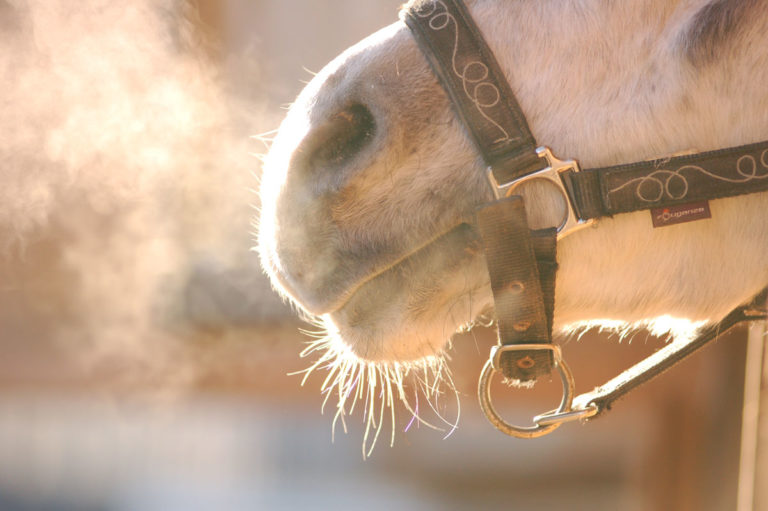
It is common to see riding horses with high neck crest scores and body condition scores (BCS) that exceed 5 on the Henneke Scale (1-9). A recent review of multiple studies revealed the consequences of extra body fat (or rider weight) on equine health and performance. Such information can be useful to share with clients to improve their understanding of how to optimize their horses’ health and performance.
Prevalence of Equine Adiposity
Overweight or obese horses with excess body fat experience health detriments and a higher workload that adversely impacts performance. A variety of studies report that 22-50% of horses in the U.S. are overweight and, of these, 15-30% are obese. Many owners give their horses too much high-quality feed for a relatively low level of exercise. It is not unusual for horse owners to underestimate their horses’ condition, especially when judges often score show horse competitors more favorably when a horse is overweight. Body condition scores of 6 and 7 are even referred to as “show condition.”
Health Risks of Equine Adiposity
Health risks due to adiposity are abundant: Equine metabolic syndrome (EMS); insulin dysregulation (ID); adipose tissue dysfunction; systemic inflammation; laminitis; gut dysbiosis; and reproductive problems, to name a few. Adipose tissue acts as an endocrine organ and an energy reservoir. Too much adipose tissue impairs insulin signaling, leads to glucose dysregulation, and increases reactive oxygen species, resulting in inflammation.
Exercise is more strenuous for overweight horses and can potentially lead to or exacerbate osteoarthritis because of the added mechanical load and proinflammatory compounds produced by adipose tissue. The weight of rider, saddle, and gear further amplifies the load on a horse’s musculoskeletal system. Study results show that horses exercised on a treadmill increase oxygen consumption by 15% when carrying 10% more weight. In Standardbred and Thoroughbred racehorses, race time increases considerably with body weight increases of just 20 pounds or more. Endurance horses with lower (but not too low) body condition scores complete races more often than those with higher body condition scores and rump fat. Endurance horses with a BCS of 5 or 5.5 (Henneke scale) have the highest completion rates.
Extra adiposity also interferes with heat dissipation during exercise because fat is an insulator that further reduces the surface area for evaporative sweating. Heat stress impacts performance, especially in hot and humid climates; in some sports, especially those of long duration, heat stress might be the reason a horse is retired from competition.
Risks of Weight Overload on Horses
In working horses or asses, excess workload creates welfare concerns. The same situation applies to riding schools that must consider rider weight relative to a horse’s size and stature. Weight overload on an equid affects heart rate, gait rhythm, lactate, and behavior. A horse carrying an additional 15% of its body weight experiences a higher heart rate and higher body temperature. With 25-30% additional body weight, lactate elevates and heart and respiration rates increase further. The rider’s skill level and balance in the saddle have varying effects on a horse’s workload, as well.
Based on study results, added weight can also affect equine movement and limb symmetry. One study showed that an extra 18 kilograms (approximately 40 pounds) on a jumping horse impacts not only jumping kinematics but also landing behavior, with increased ground reaction forces placing more stress on all musculoskeletal tissues. Tendons, ligaments, bones, and joints assume added forces that can lead to injury.
Client Education
With these concerns in mind, veterinarian efforts to educate clients about nutrition, exercise, and body condition scores can greatly benefit a horse’s health, quality of life, and welfare while optimizing performance.
Reference
Pratt-Phillips S and Munjizun A. Impacts of Adiposity on Exercise Performance in Horses. Animals Feb 2023, vol. 13. DOI: 10.3390/ani13040666
Related Reading
- Equine Asthma and Obesity
- Owner Education about Control of Equine Obesity
- Reproductive Effects of Endocrinopathies
Stay in the know! Sign up for EquiManagement’s FREE weekly newsletters to get the latest equine research, disease alerts, and vet practice updates delivered straight to your inbox.









